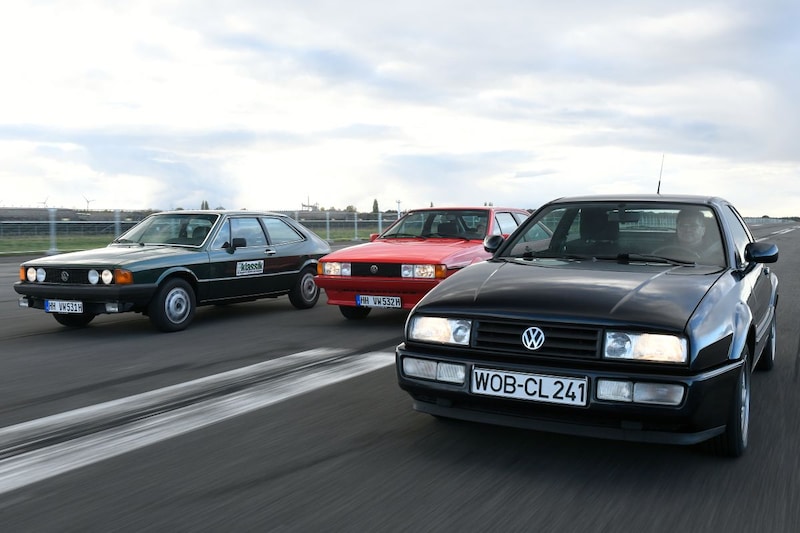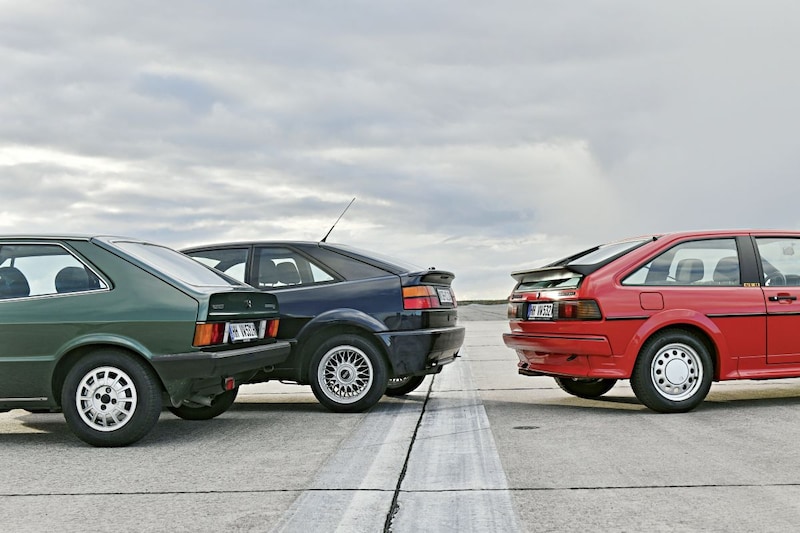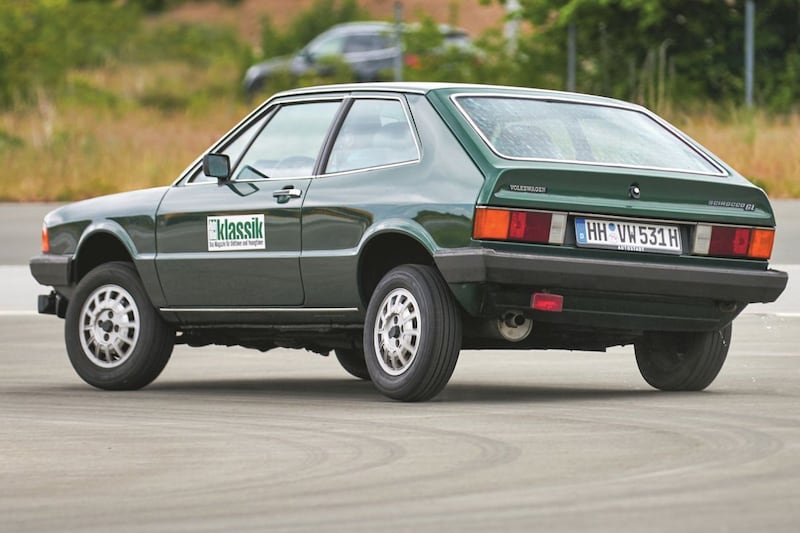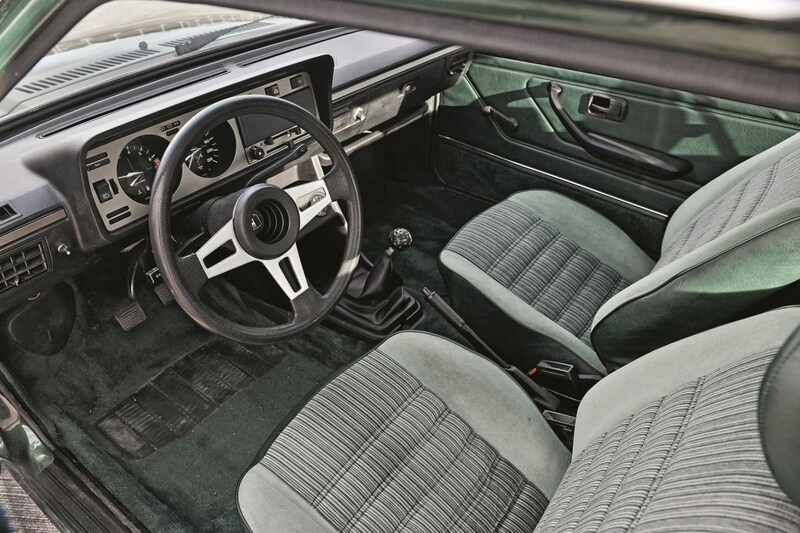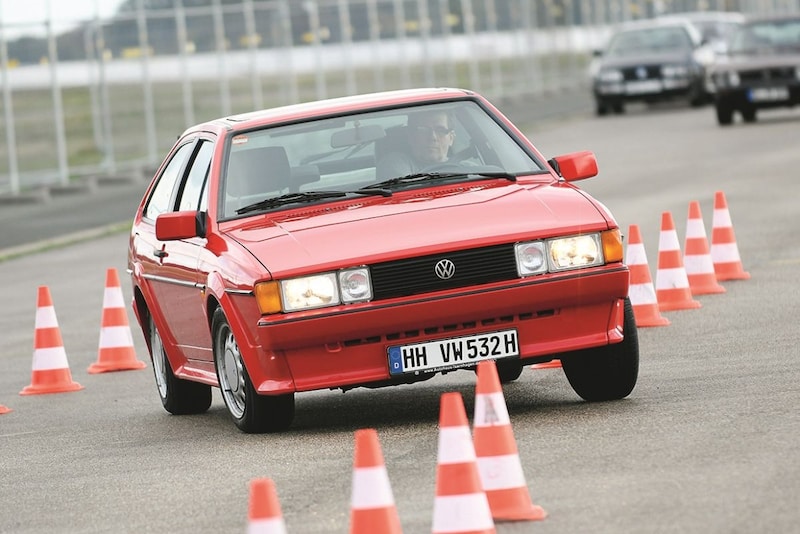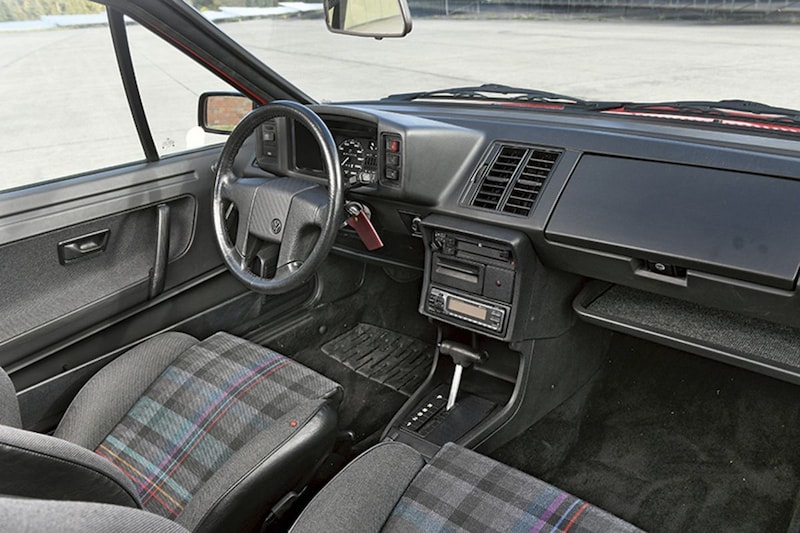You wouldn’t tell based on their looks, but the Scirocco I and II and the Corrado that followed these models have a lot in common. A closer look at three generations of VW’s affordable sports coupe.
If we were only to look at the popularity of the car, this comparative test would have been decided before it had even started. The numbers speak for themselves: Volkswagen sold 504,153 copies of the Scirocco I and 291,497 Scirocco’s II, but only 97,521 Corrado’s. Although the first modern sports car from Volkswagen rolled off the production line much more often than the two successors, today it is rarer and more expensive. As the only one of the three, it is also an undisputed classic.
Does that make the Scirocco I an unbeatable heart thief and are its successors soulless models, who only score because they are the descendants? No, it’s not that simple anymore. This is also due to the fact that Herbert Schäfer, about whom more will be discussed later, has taken over more parts than was generally assumed. And perhaps also with the fact that in the 21 years that the three generations were in production, less has changed than we thought at the time. We made the changes bigger than they might have been.
It’s high time we got to know the three better. First of all, we do this on a closed track, so that we can map out the differences properly. They are, to say the least, both larger and smaller than expected.
tinny
We start with the original model, the Scirocco I. The low coupé encloses the driver just as closely as a classic Porsche 911, even though the windscreen is less steep and the roofline is not as steep. You quickly get the feeling of being one with the car, although it is longer at the front and shorter at the back than you assumed when you got in. The car feels playful, despite the lack of power steering it hardly takes any force to turn the steering wheel. That has something to do with the weight of the test car, only 807 kilos. The car also looks tinny and not robust. It is a child of the 70s, with the carburetor technique that was common then and limited sound insulation. Volkswagen had little experience with cars with a unibody construction; that is noticeable.

We change into the Corrado, a nice contrast. The (provisional) last member of Volkswagen’s coupé family weighs no less than 297 kilos more. Production was discontinued in 1995, more than two decades after the Scirocco went on sale. The door closes with a solid sound and instead of the high-frequency sound of the engine, carburettor and exhaust, lower notes reach the ears in this car.
So far no surprises. What is striking is that the Corrado does not drive as refined and smooth as the appearance would have you believe. The engine makes quite a bit of noise (especially when you’re outside, but also inside) and the chassis is sturdier than you’d expect if you’ve ever driven an Opel Calibra. That is the arch-rival at the time who apparently did a lot better in this area.
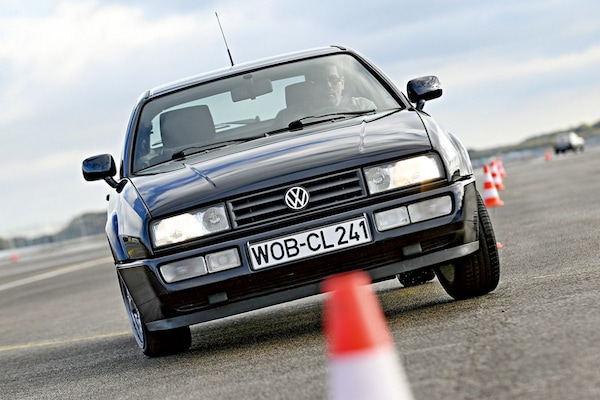
harbinger
A dive into the technical development of Volkswagen over the years. When the Scirocco rolls into showrooms on April 18, 1974, it foreshadows the Golf I, which will hit the market shortly after. He shares a lot with that model, but not the body: the front and rear axles, the steering, the dashboard carrier, the seats, the door handles, the wiring harness, the exhaust system and the gearbox. Power is provided by a 1.1 liter engine with 50 hp (later a 1.3 liter with 60 hp), a 1.5 liter with 70 hp, a 1.6 liter with 85 hp (instead of 75 hp in the Golf) and the 110 hp GTI injection engine.
Volkswagen sticks to a tradition and presents the coupé as a harbinger of a new volume model, without getting the new technology. The Corrado comes on the market in October 1988, no less than three years before the Golf III. It paves the way for that model’s new design language, but technically it still bases itself on its predecessor, even though there were similarities with the more modern closed-front Passat, such as the dashboard, the gearbox with cables and some other details. Technically, the Golf II in turn has more in common with the Golf I, and the Scirocco I based on that model, than you would expect based on the appearance. In retrospect, for example, the Corrado is less distant from the original model than in our memory. Especially if it has the 115 hp base engine, which will downgrade it to Scirocco level later in life. The model was actually born out of necessity after a mistake in the planning. In design it is the Scirocco III, but in the development phase the costs quickly become too high.
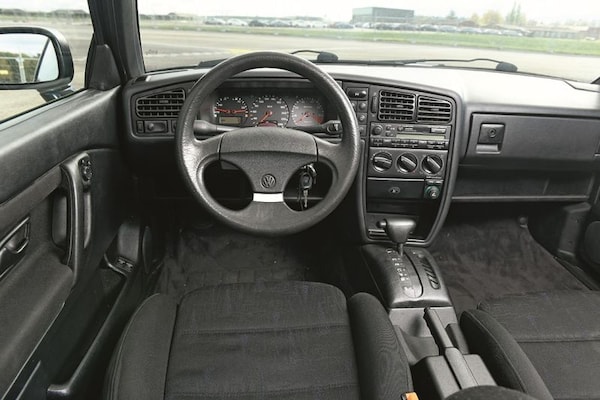
Volkswagen Corrado
It is decided to turn it into a technology carrier and to position it half a class above the Scirocco. To honor that higher positioning, it comes with extensive standard equipment, including ABS, power steering, electrically operated mirrors and a rear spoiler that automatically raises at 120 km/h. The engines of the latter two facilities are surprisingly noisy.
ignored
The drive options match the ambitions that Volkswagen has with the Corrado. The model will initially only be delivered with the brand’s top engine at the time: 1.8 liters, a G-loader and 160 hp. The 2.9-liter variant of the VR6 engine with 190 hp will follow later; The range is also being expanded with the 2.0-litre four-cylinder engine with 136 hp. Only just before production stops, the basic engine appears, the eight-valve that ensures that the Corrado in this test feels like a slightly beaten brother of the Scirocco I, but dressed with sound-damping material and a good load of black plastic.
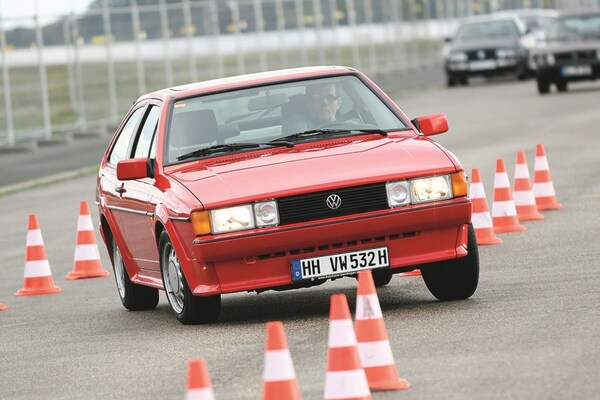
And what about the Scirocco II? For a long time they ignored the enthusiasts even more than the Corrado, and that while he only had the bad luck that he had been given an unsightly tailgate. While driving, there are more similarities with the successor than with the predecessor, a good thing. The injection engine (with catalytic converter) ensures that the car feels less tinny and vibrating. It weighs 99 kilograms more, but the measures have provided more stability and better noise reduction. That makes him seem a bit more mature. The measurements of the interior noise confirm that picture. The first generation has 77 dB(A), the second generation 73 dB(A) and the Corrado 72 dB(A). And that while the Scirocco II has a lot in common with the Golf I from a technical point of view. The wheelbase is the same down to the millimeter, and that also applied to the engine range in the early years. That was not surprising, because when the Scirocco II was presented to the world in March 1981 during the Geneva Motor Show, the debut of the Golf II would be two and a half years away.
You also notice that in the driving characteristics. In principle, it is understeered, but with abrupt evasive maneuvers the rear becomes very light, so that at some point you even have to countersteer. Thus, the Golf genes are unmistakable in all three coupés, with only the speeds differing depending on the tire size. At high speeds, the rear of the Corrado steers a little.
Audi Avant-esque
Now about Herbert Schaefer. He is often accused of having blown up Giorgetto Giugiaro’s pure design for the first Scirocco. If you look at the back of the Scirocco II, the critics seem to be right. The shape derives from both the Audi Avant-like, somewhat half-hearted-looking round shape and the 17 centimeters longer body, which is mainly reflected in the overhang at the rear. Schäfer later elegantly corrected this flaw on the Corrado, with a high yet sleek-looking rear and a short rear overhang. But if you look closely at the photos on this page, you’ll come to the conclusion that the cars have a lot more in common than you might initially expect based on their layout and boot space.
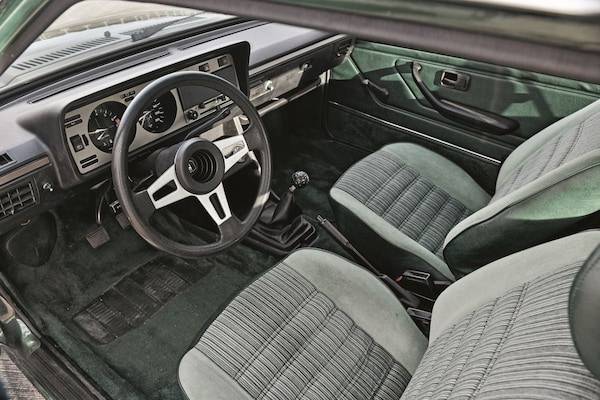
We then take a seat in the velvet-covered Golf seats of the Scirocco I with the comfortable GT trim level, quite different from the firmer sports seats of the two younger models, which mainly offer more lateral support. Striking: in the Scirocco II, which is often put away as civil, the driver looks out on a sports car-like dashboard, while its predecessor and successor have somewhat boring-looking dashboards that share many components with the volume models of the time. Whether it really is so successful in every respect or not, the intuitive lightness does the graceful dashboard well.
cramped in the back
We then take a seat in the rear seats, which in all cases offer space for two people. Only in the Corrado you will find two separate seats. However, in no Volkswagen coupé, people who sit in the back should be taller than 1.65 meters. Those who used to want to take charming company home after a night of disco had to look for ladies who were willing to make sacrifices for the ride in the elegant sports coupé. A small consolation: in both Scirocco’s the hair of the rear passengers brush against the flat roof lining and not like in the Corrado along a hard crossbar, which is only covered by a thin covering. In the event of an unexpected rollover, this ensures that the passenger compartment is preserved, but in return it probably splits the skulls of the rear passengers.
But let’s not get lost in the details. It has always been the details that have diverted attention from the actual qualities of these compact sportsmen. That certainly also applies to the Corrado, or perhaps to the Corrado. As we wrote in the beginning: the opinion of the general public was and is unanimous, among the buyers of a new car at the time and among the current collectors plus the ‘experts’ in the pub. The real classic of the three is the Scirocco I. The question is, however, whether this judgment is still correct from a contemporary point of view and withstands practical tests.

Corrado is the best, but also the most exciting car
At first, the conclusion seems clear. The primal Scirocco is the most beautiful, interesting and historically most important model. But then you forget that in its shadow the two successors have also matured into classics with great appeal over the past decade. We don’t see them much anymore, but they both have their strong points. For example, the Scirocco II is an unrecognized talent. Agree, the round stern will not suddenly be very attractive in thirty years’ time, the proportions are simply not right. But with the long bonnet, slanted windscreen and slightly inwardly angled side windows, it worthy of a closer look at the legacy of its predecessor. Plus, unlike that model, it’s a really good car!
Because as much as we have respect for the original, you notice while driving that Volkswagen had only just started producing front-wheel drive models with unibody construction in 1974. The primal Scirocco is at its best when it is standing still. If you drive both models, it becomes clear that despite the higher weight, the Scirocco II does everything better, some things even much better. This is largely about practical matters, but also about emotion.
And then comes the Corrado, who mercilessly leaves the predecessors to bite the dust. It’s the best car in this test, because maybe it’s not that amazing. But it’s also the most exciting 31 years after its debut, with a sporty design, entertaining driveability and historical significance. It may not be old enough to win the hearts of bystanders, but it is without a doubt the most exciting car of the three.
– Thanks for information from Autoweek.nl
